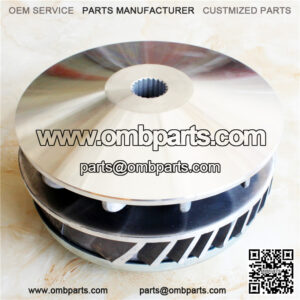Clutch
Almost all motorcycles come outfitted with a manual transmission, which includes a clutch. When teaching at my courses, I find that a majority of my students either don’t know or have trouble with the concept of what a clutch is, what it does, and how it works.
I can only imagine this is due to most cars, trucks, and other non-two-wheeled vehicles being equipped with an automatic transmission that doesn’t require a clutch and shifting mechanism, so many people don’t have a reference point.
Even with a working knowledge of all that is clutch, everyone has growing pains when learning how to use it. In the course I teach at SAIT, we spend hours making sure people are comfortable using the clutch and continue to build on that skill continuously throughout the rest of the course.
Be sure to take time developing your skills using the clutch and that you are comfortable with it, especially if you are following our learn to ride a motorcycle guide, as many of the articles will expand on the concepts from this article.
What is a Clutch?
A clutch is a control/mechanism of a manual transmission (both cars & motorcycle) which variably delivers power that the engine is producing to the gearbox/transmission, which in turn is connected to the driving wheel.
How Does a Clutch work?
There are two types of clutches: wet clutch and dry clutch.
Wet Clutch
- The clutch is bathed in lubricants/fluids to help cool and mitigate wear and tear. This allows for a clutch to take a lot of abuse, especially from new riders.
- Wet clutches are notably quieter than dry clutches.
- Most street bikes have a wet clutch.
Dry Clutch
- There is no lubrication/ fluids used in the clutch system. The clutch has a shorter life span but is considered to have higher performance, a.k.a. “less drag on a motor”.
- There are many designs of clutches but all functionally operate on the same basic Typically only MotoGP bikes and a select few manufacturers really ever used dry clutches, Ducati, BMW, and Moto Guzzi to name a few.
The clutch system works on the principle of friction. The diagram below shows the basic mechanical premise of a clutch system.
- A plate that is connected to the driving shaft/motor
- A separation or gab
- Another plate that connects to the driven shaft/transmission and wheel
This clutch mechanism is controlled on a motorcycle by a hand lever.
- When the lever is pulled in all the way the plates are separated (“0% power transferred”), but as you release the lever the plates get closer together allowing a variable connection between the Motor and the wheel, based on the amount of pressure and friction being applied on the clutch.
The more friction or pressure, the more power is transferred to the wheel. Which is controlled by how much you release the lever.
- When the lever has been fully released the clutch plates should act as if they have been fused together delivering all of the motor’s power directly to the transmission and wheel (“100% of the power delivered”).

